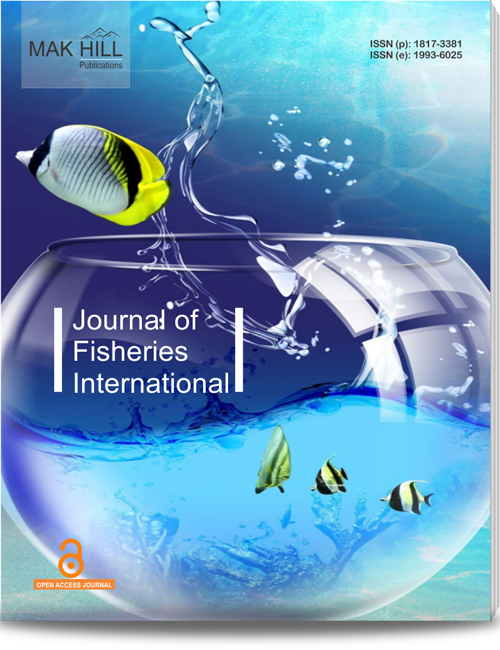
Journal of Fisheries International
ISSN: Online 1993-6025ISSN: Print 1817-3381
Abstract
Global demand for fish has continued to increase, particularly as urban populations and incomes rise in developing countries. Fresh fish is highly susceptible to rapid deterioration after harvest, particularly under arid tropical conditions which are commonly prevalent in Oman. Losses in product quality (due to downgrading) and quantity (unfit for utilization) represent economic losses to the fishermen, traders and end-users. Efforts to reduce the incidence of postharvest losses must include the quantification of the magnitude of losses and identification of critical control points along the supply chain. In this study, we used a combination of structured interviews, questionnaires and field observations to assess the incidence of postharvest losses among fishermen and fresh fish traders in Oman. Our study showed that considerable losses in value occur at key stages in the supply chain, including landing sites, retail and wholesale. The actual quantity of loss as perceived by respondents depended on fish type, time between catching and landing and market forces. Overall, losses in value per day due to downgrading can range from 11 to 33% of the price of top quality product. Most respondents identified the availability of sufficient quantity of ice for cold storage as a major factor in their ability to reduce the incidence of losses. Processing into maleh-a traditional dried spicy fish product, is the most common strategy adopted to reduce wastage in large pelagics (such as tuna). Small pelagic fishes such as sardines are usually stored in ice for up to two days before discarding as waste if there is no market and up to 400 pieces per fisherman per day can be discarded as waste.
How to cite this article:
Linus U. Opara and Saud M. Al-Jufaili . Status of Fisheries Postharvest Industry in the Sultanate of Oman: Part 2-Quantification of Fresh Fish Losses.
DOI: https://doi.org/10.36478/jfish.2006.150.156
URL: https://www.makhillpublications.co/view-article/1817-3381/jfish.2006.150.156